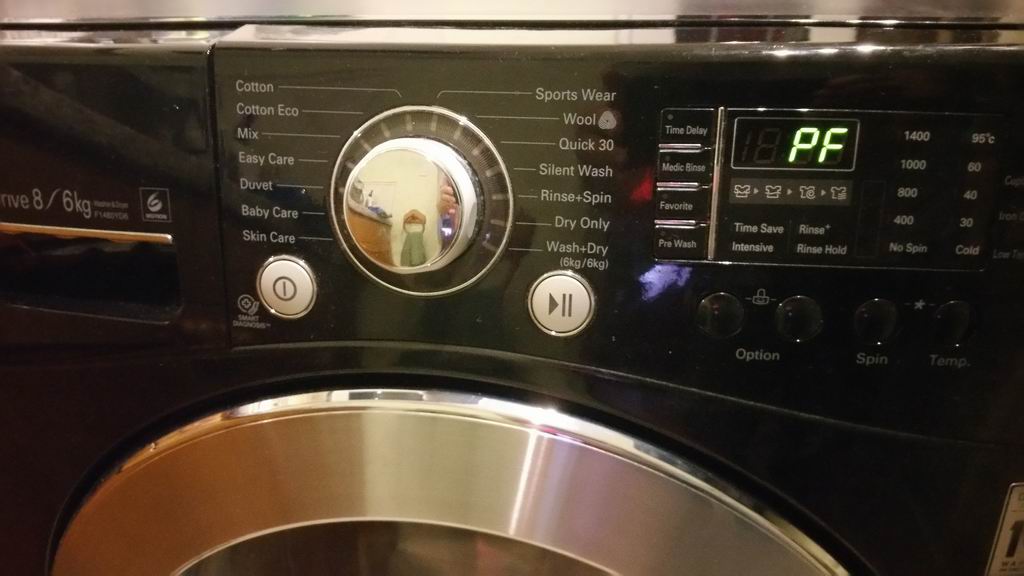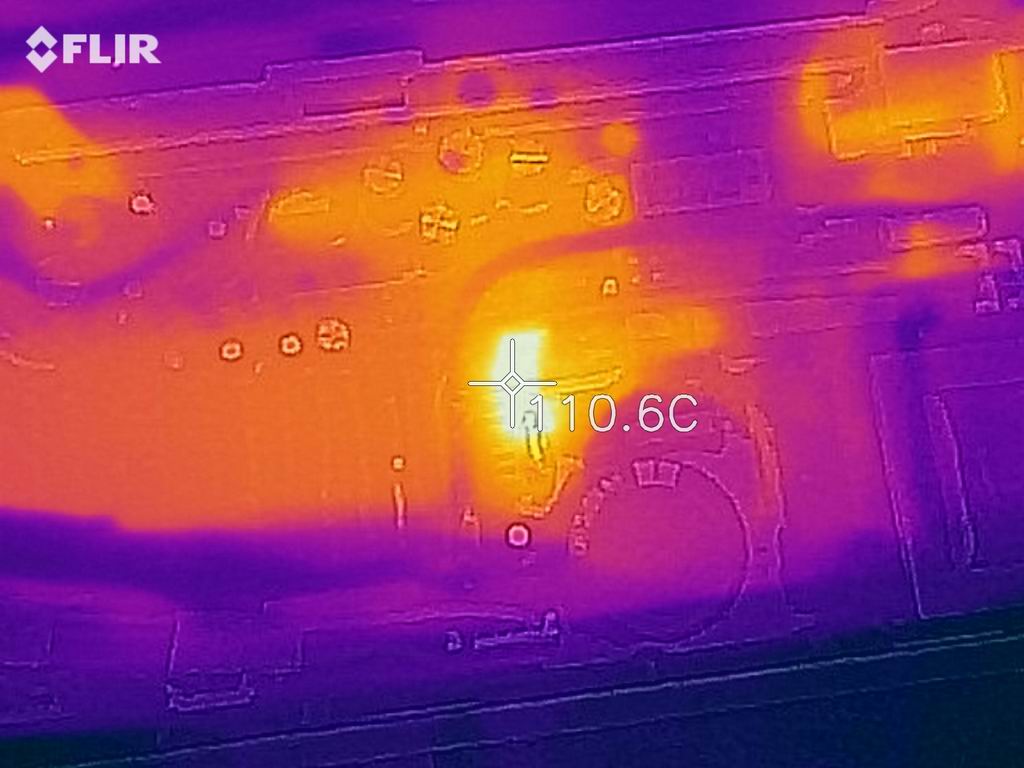We have a 6-yr old LG combo washer dryer model 1480YDS that has started to cut out part way through the drying cycle. This has now become a highly repeatable failure giving me a chance to diagnose the problem. On restarting the machine (after an imposed wait of a minute or two) the display would show PF (power fail error) indicating an unexpected removal of power part-way through a programme.

Searching around the internet this fault seems to be fairly common to a wide range of similar LG washer dryers and because the only solution people were finding was to replace the entire control board for around £130, I decided to work out what sub component was failing.
I wondered initially if it might me a glitchy relay or something else relating to the drying phase causing the microcontroller to crash out because the machine would happily do a full wash lasting over an hour, but would always stop after 5 minutes or so of tumble drying. Equally it might have been the increased heat of clothes drying - but disconnecting the heater element (both cooling things down and removing a big switching current) made no difference to the time it took to cut out.
I figured that if programmed machine logic was involved it would report a more specific error so the PF error is indicative of an unexpected power down. This got me thinking about the power supply itself. Sure enough, a thermal camera image of the control board in action revealed one very hot TOP242 IC. The shot here shows it still working at 110C but it will go past 130C whereabouts the built-in thermal shutdown trips. Bingo!

The TOPSwitch datasheet confirms the trip-point to be 130C to 150C and a ghetto-rigged fan proves the point finally keeping the machine going all the way through a 1 hour + drying cycle with the TOPSwitch staying under 50C.

Tempted as I am to bore a hole in the control box lid and mount the fan there full-time, it's obviously not fixing the problem at source. I think the most likely reason for the TOPSwitch to overheat would be the 330uF 400V input reservoir capacitor ageing. All the capacitors are suspect of course so the next step is to try and remove/test/replace as necessary. Unfortunately the PCB is flooded in the case with a clear potting compound that I'm not looking forward to tearing out. Will try and keep this posted.
Searching around the internet this fault seems to be fairly common to a wide range of similar LG washer dryers and because the only solution people were finding was to replace the entire control board for around £130, I decided to work out what sub component was failing.
I wondered initially if it might me a glitchy relay or something else relating to the drying phase causing the microcontroller to crash out because the machine would happily do a full wash lasting over an hour, but would always stop after 5 minutes or so of tumble drying. Equally it might have been the increased heat of clothes drying - but disconnecting the heater element (both cooling things down and removing a big switching current) made no difference to the time it took to cut out.
I figured that if programmed machine logic was involved it would report a more specific error so the PF error is indicative of an unexpected power down. This got me thinking about the power supply itself. Sure enough, a thermal camera image of the control board in action revealed one very hot TOP242 IC. The shot here shows it still working at 110C but it will go past 130C whereabouts the built-in thermal shutdown trips. Bingo!
The TOPSwitch datasheet confirms the trip-point to be 130C to 150C and a ghetto-rigged fan proves the point finally keeping the machine going all the way through a 1 hour + drying cycle with the TOPSwitch staying under 50C.
Tempted as I am to bore a hole in the control box lid and mount the fan there full-time, it's obviously not fixing the problem at source. I think the most likely reason for the TOPSwitch to overheat would be the 330uF 400V input reservoir capacitor ageing. All the capacitors are suspect of course so the next step is to try and remove/test/replace as necessary. Unfortunately the PCB is flooded in the case with a clear potting compound that I'm not looking forward to tearing out. Will try and keep this posted.
Comment